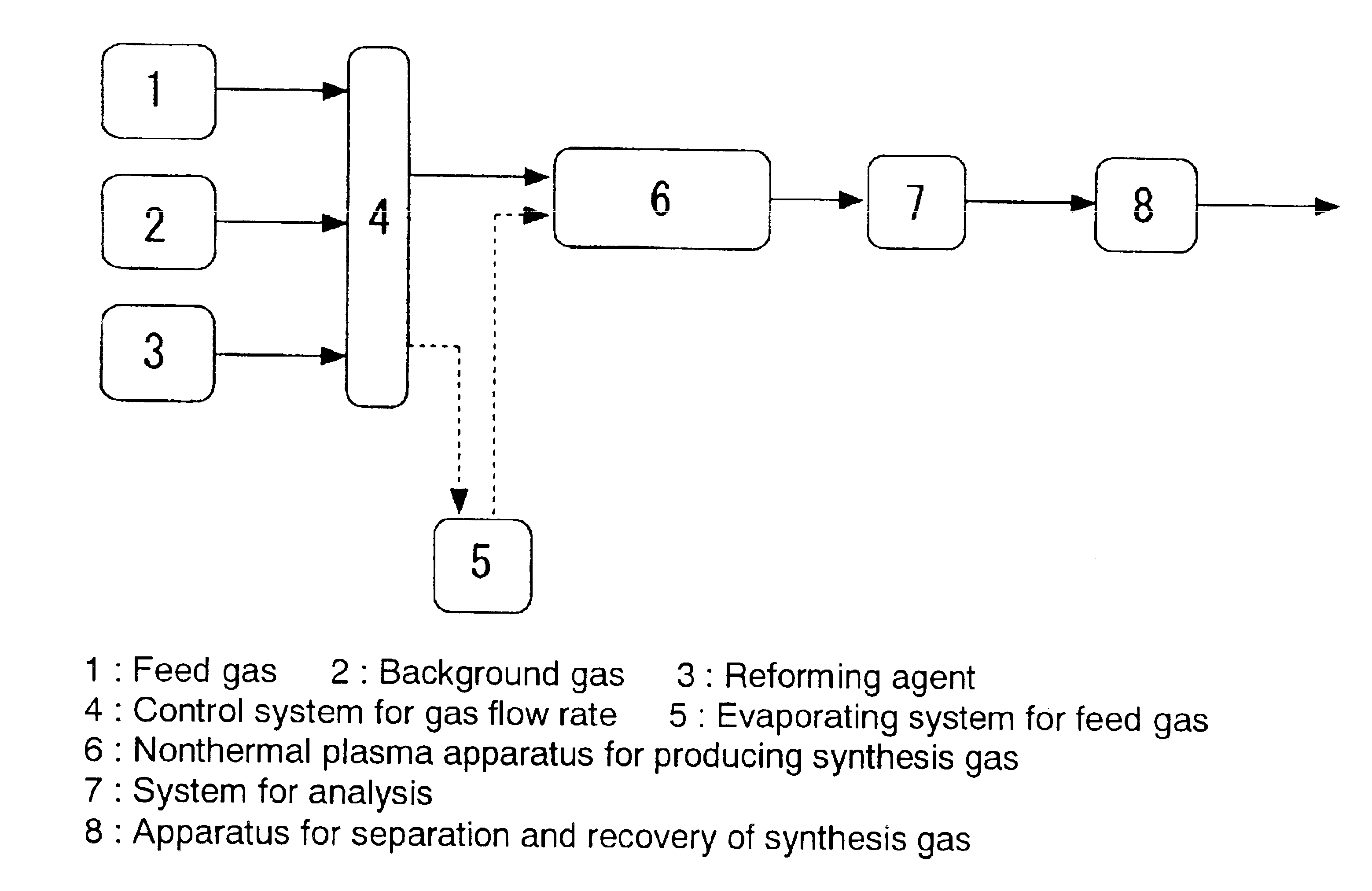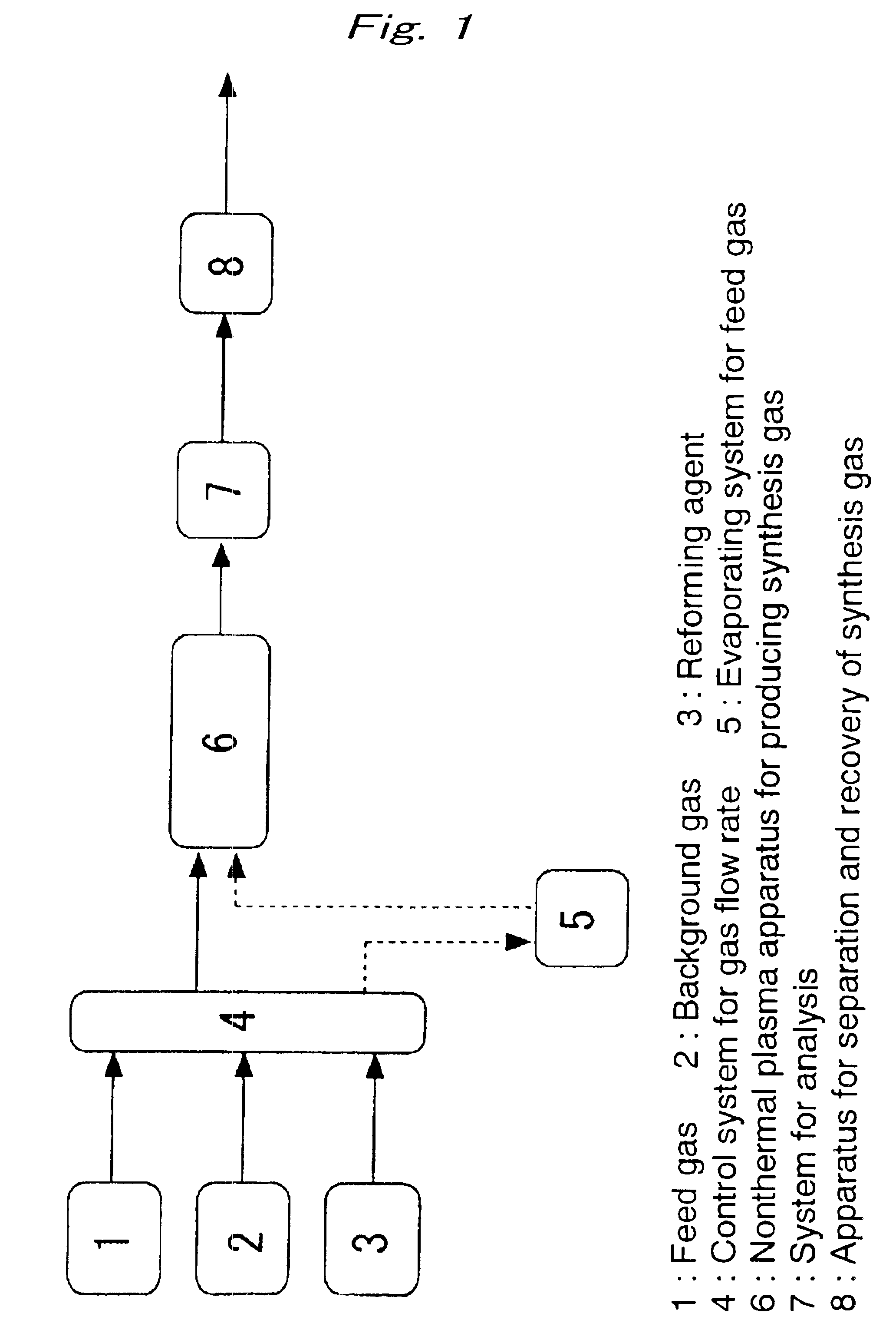Process for production of hydrogen using nonthermal plasma
- Summary
- Abstract
- Description
- Claims
- Application Information
AI Technical Summary
Benefits of technology
Problems solved by technology
Method used
Image
Examples
examples 1 to 3
[0051]Following the flowchart illustrated in FIG. 1, methane (Example 1), ethane (Example 2), and propane (Example 3) were each subjected to steam reforming (reforming agent: water), using nonthermal plasma.
[0052]Specifically, steam reforming of methane (Example 1), ethane (Example 2), and propane (Example 3) was performed using a packed-bed type nonthermal plasma reactor filled with pellets of a ferroelectric substance (distance between electrodes, 1.54 cm), which was barium titaniate (BaTiO3) (particle size, 1 mm) having a dielectric constant of 5,000 at room temperature.
[0053]50 Hz alternating voltage was applied between both electrodes, and consumed electric power at the primary side was measured by means of a digital powermeter. SED (Specific energy density) was calculated as the ratio of the above-mentioned consumed electric power and the rate of gas flow. A dry nitrogen gas was used as a background gas, and water was added, by an associated (entrained) evaporation of hydrocar...
example 4
[0062]The same steam reforming of methane as in Example 1 was repeated, except that the water / methane ratio was changed.
[0063]The thus-obtained results are shown in FIG. 6. From FIG. 6, it can be understood that, when the water / methane ratio was changed in the range of 0 to 2.5, the hydrogen / carbon monoxide ratio changed in the range of 3.7 to 11.4. FIG. 6 demonstrated a tendency toward increase in the hydrogen / carbon monoxide ratio as the water / methane ratio increased from 1.0. This is because carbon monoxide was oxidized to carbon dioxide.
example 5
[0064]The same steam reforming of methane as in Example 1 was repeated, except that the reforming was continuously carried out over 10 hours under the conditions of an applied voltage of 7.2 to 7.4 kV, and a consumed electric power at the primary side of 19.5 to 20.5 W.
[0065]The thus-obtained results are shown in FIG. 7. From FIG. 7, it can be understood that 120% hydrogen selectivity and 60% carbon monoxide selectivity were maintained in Example 4. This result demonstrates that the method of the present invention made it possible to run the reforming reaction system continuously and stably for a long period of time.
PUM
| Property | Measurement | Unit |
|---|---|---|
| Temperature | aaaaa | aaaaa |
| Temperature | aaaaa | aaaaa |
Abstract
Description
Claims
Application Information
 Login to View More
Login to View More - R&D
- Intellectual Property
- Life Sciences
- Materials
- Tech Scout
- Unparalleled Data Quality
- Higher Quality Content
- 60% Fewer Hallucinations
Browse by: Latest US Patents, China's latest patents, Technical Efficacy Thesaurus, Application Domain, Technology Topic, Popular Technical Reports.
© 2025 PatSnap. All rights reserved.Legal|Privacy policy|Modern Slavery Act Transparency Statement|Sitemap|About US| Contact US: help@patsnap.com



